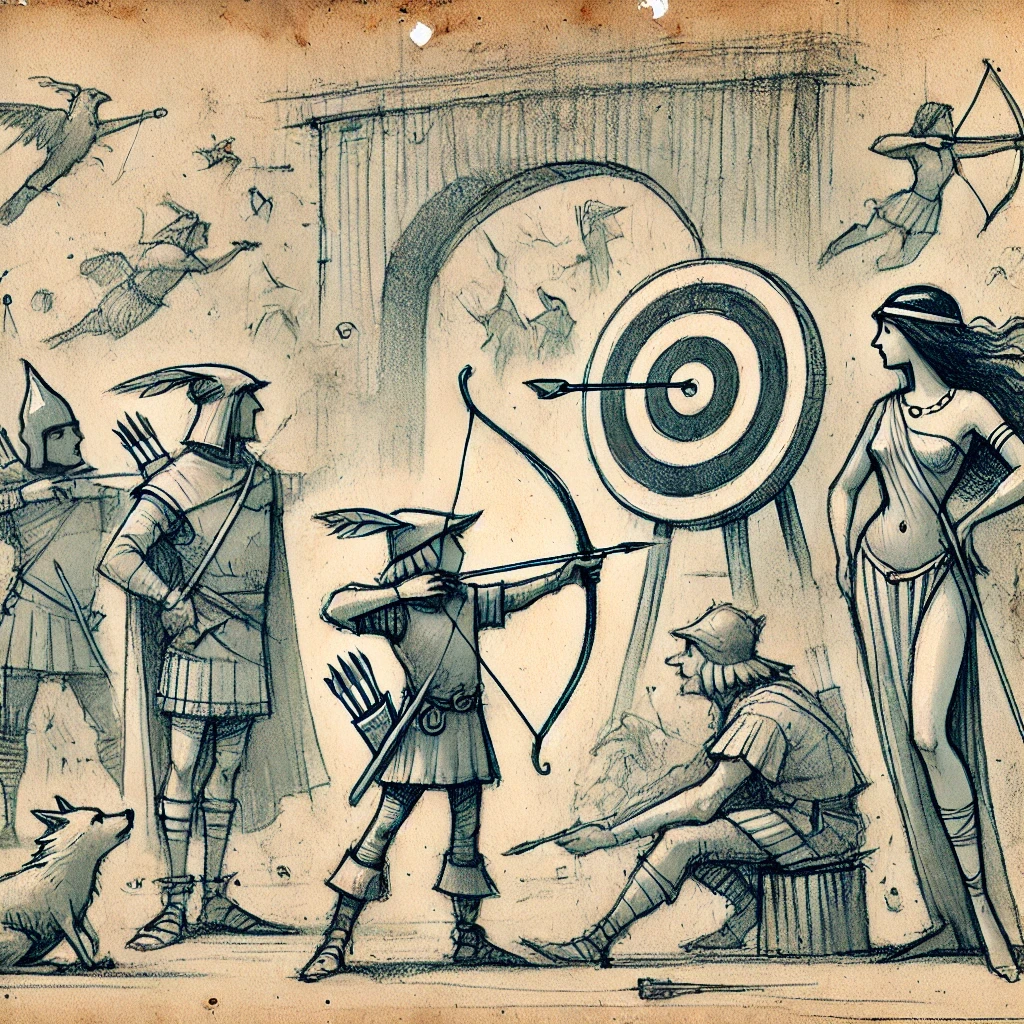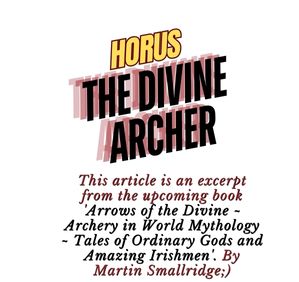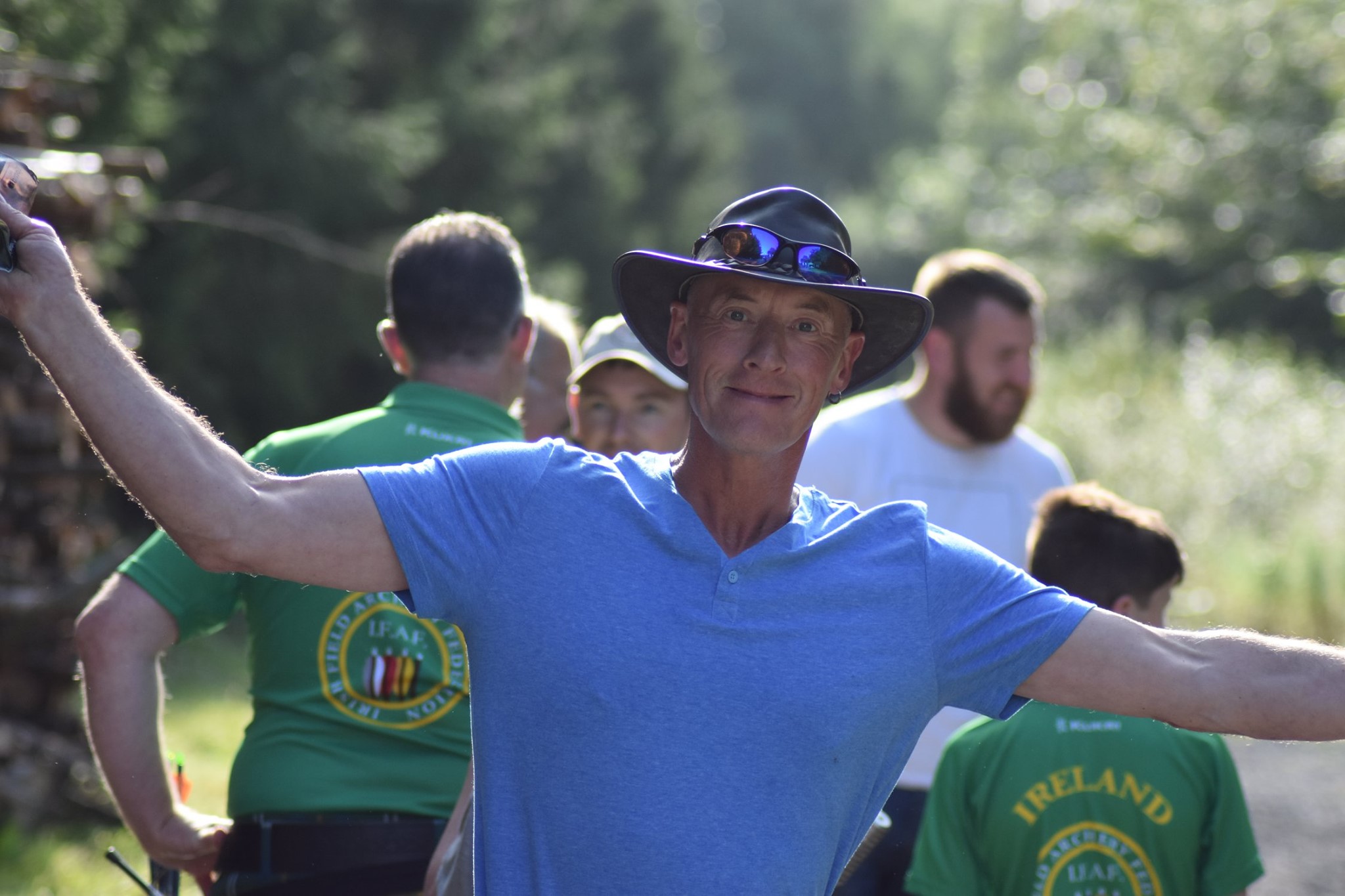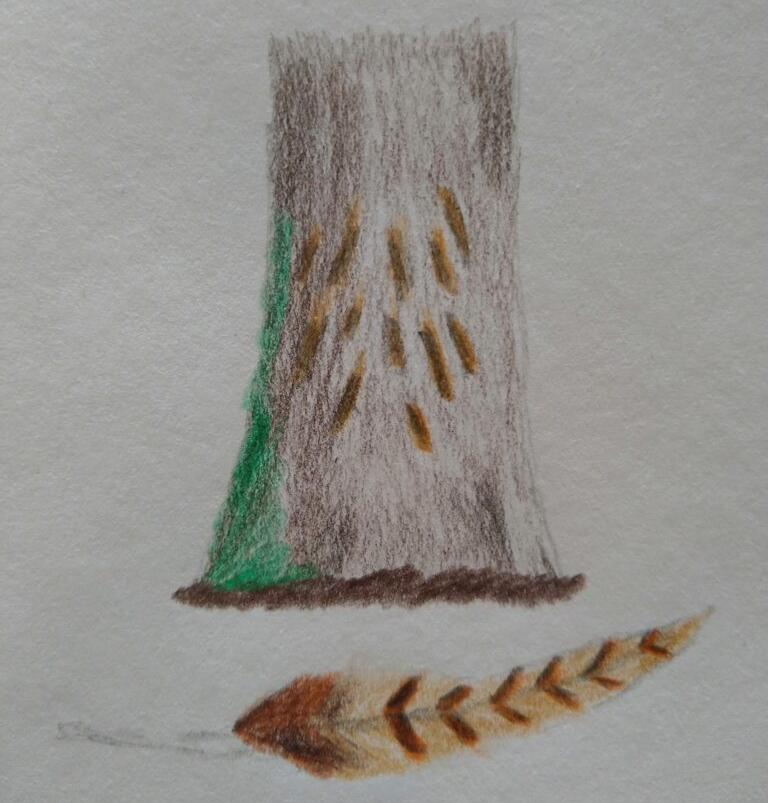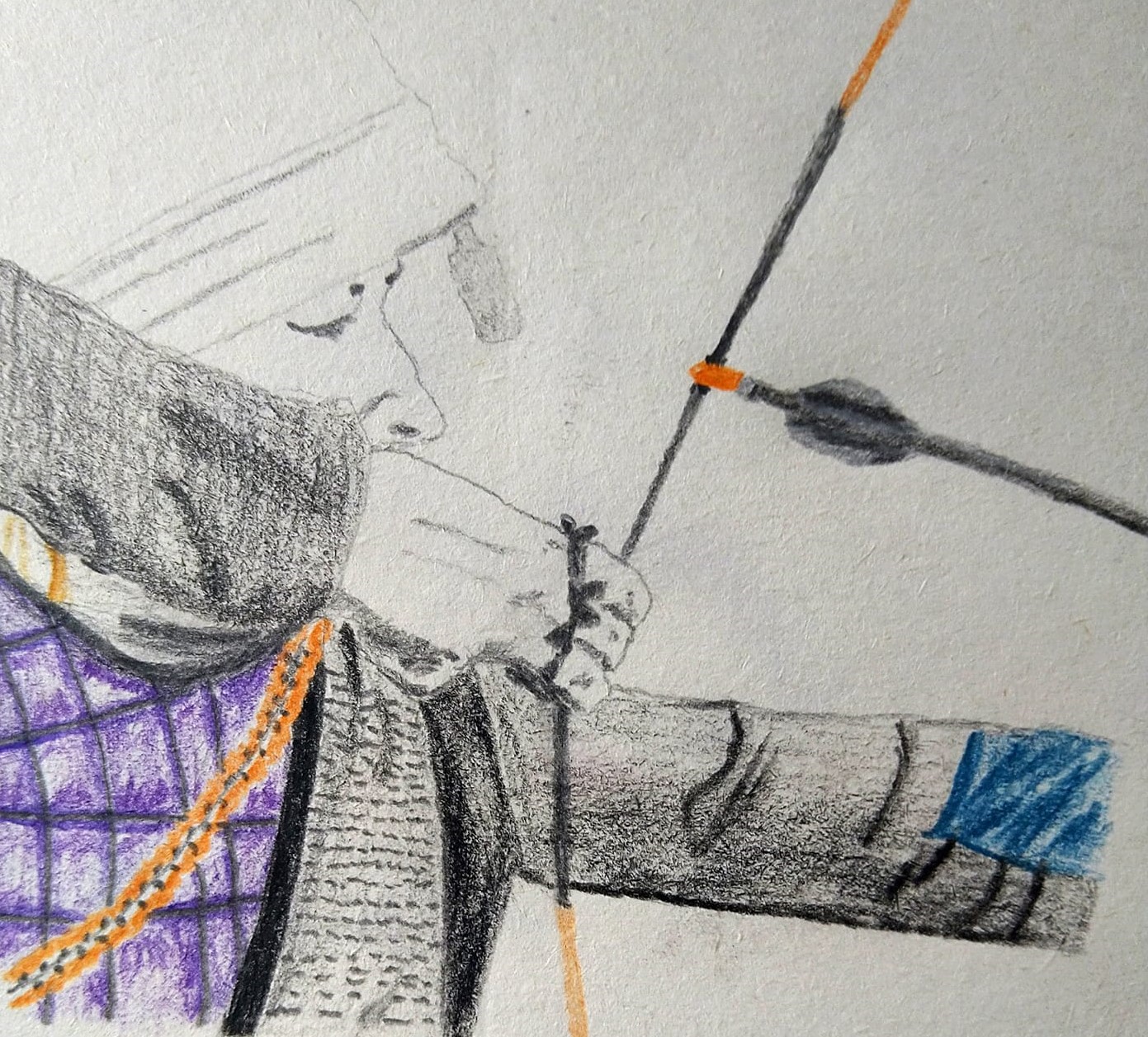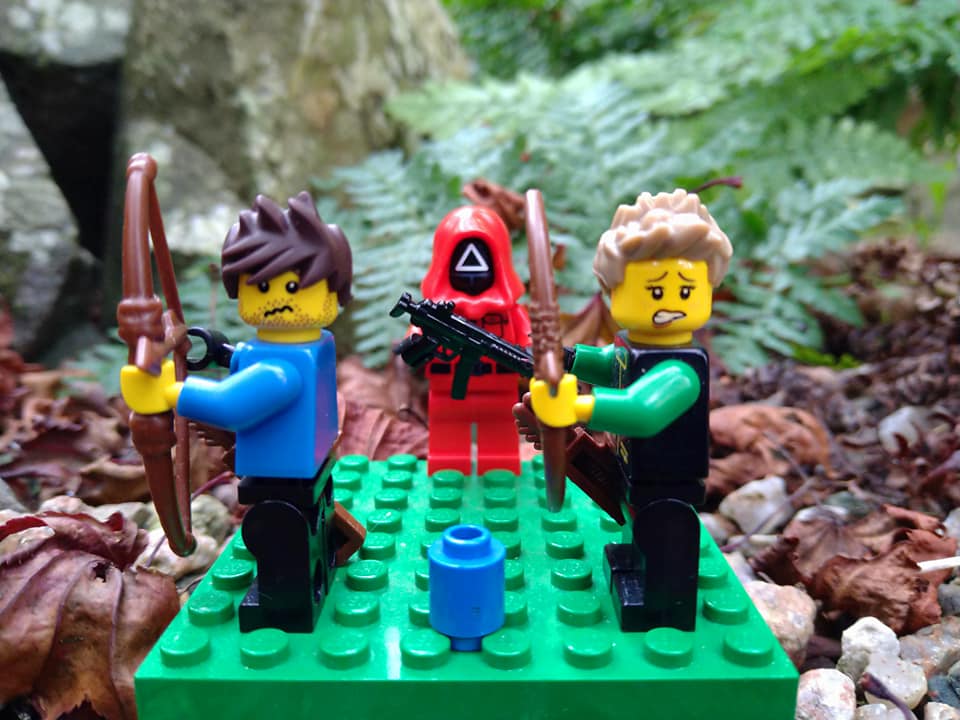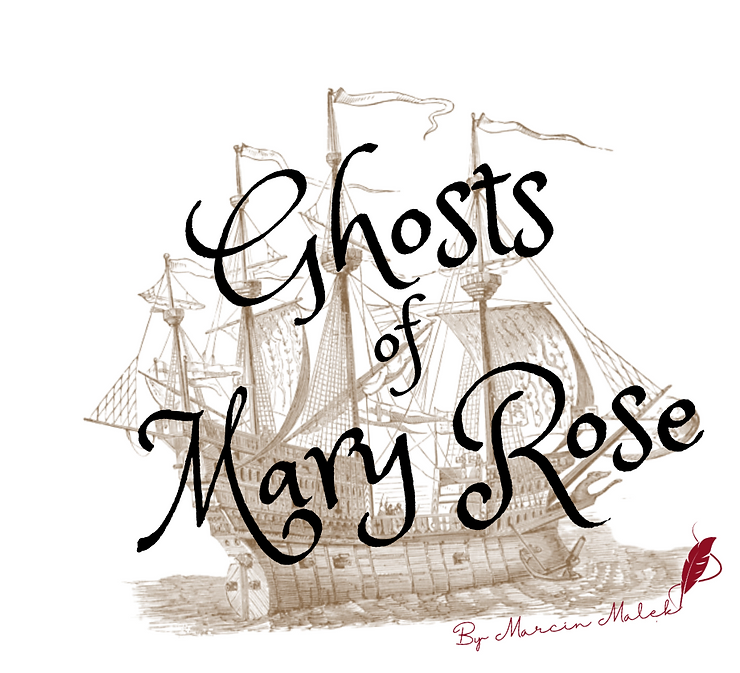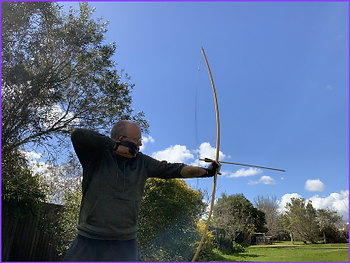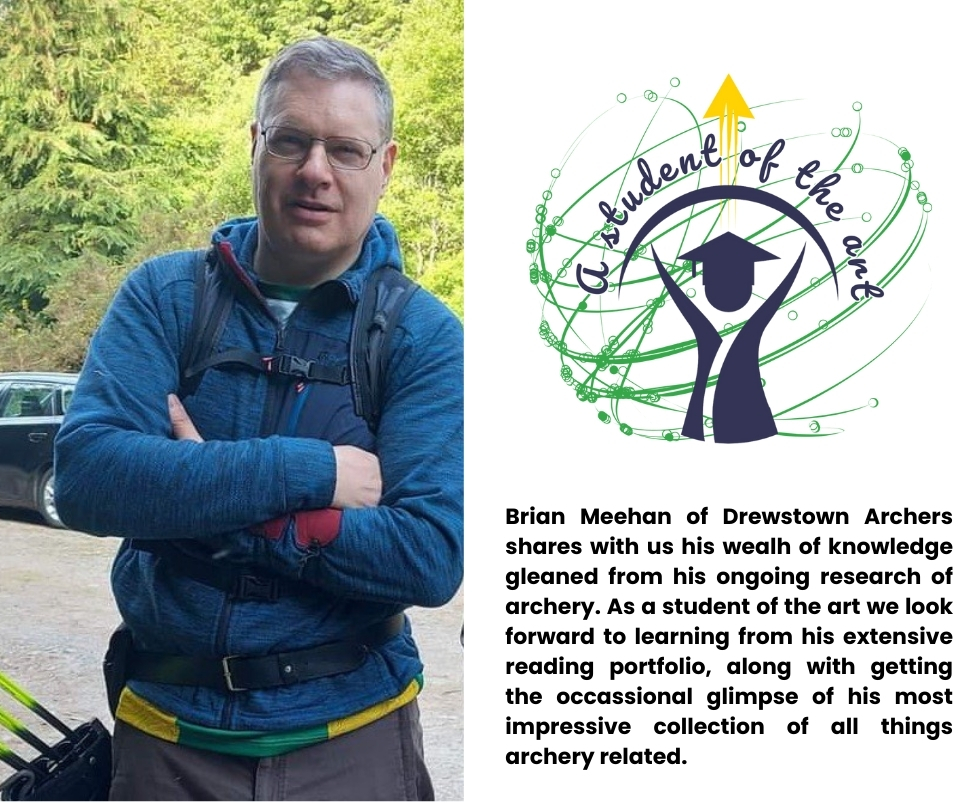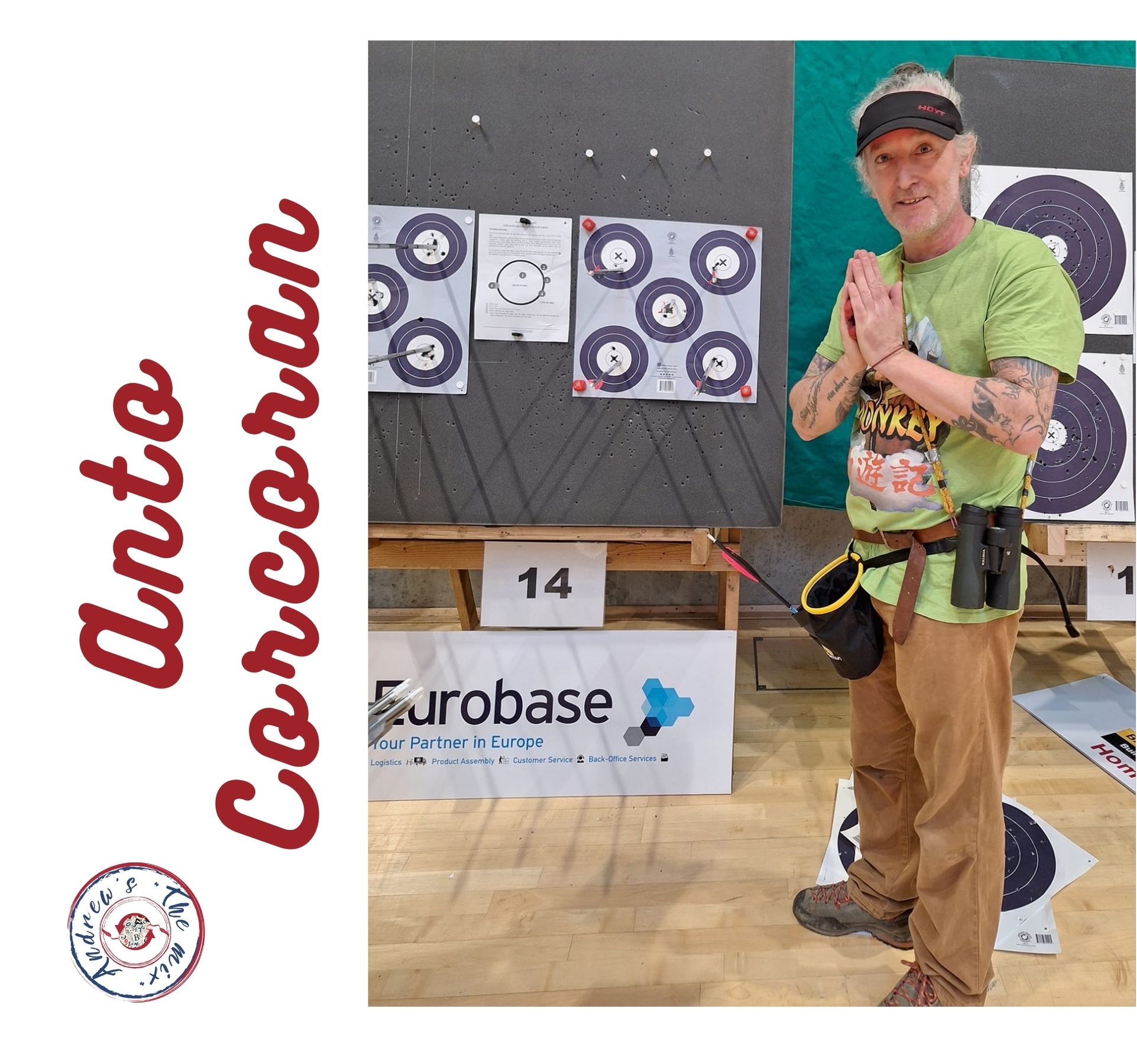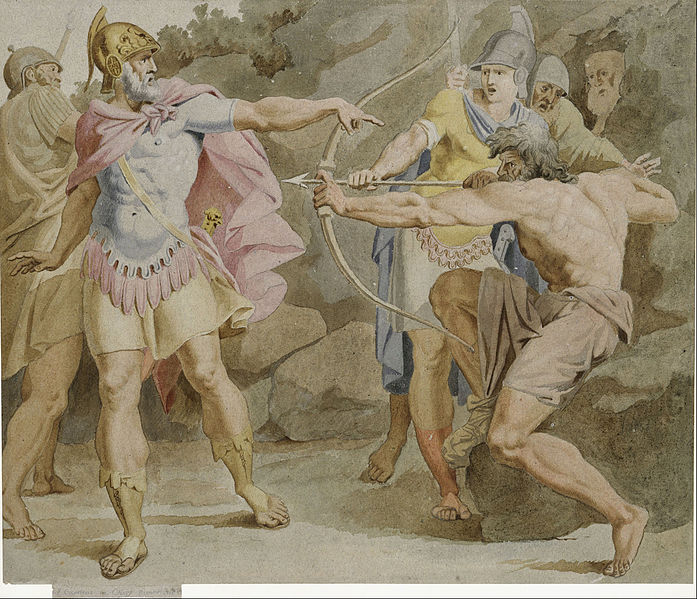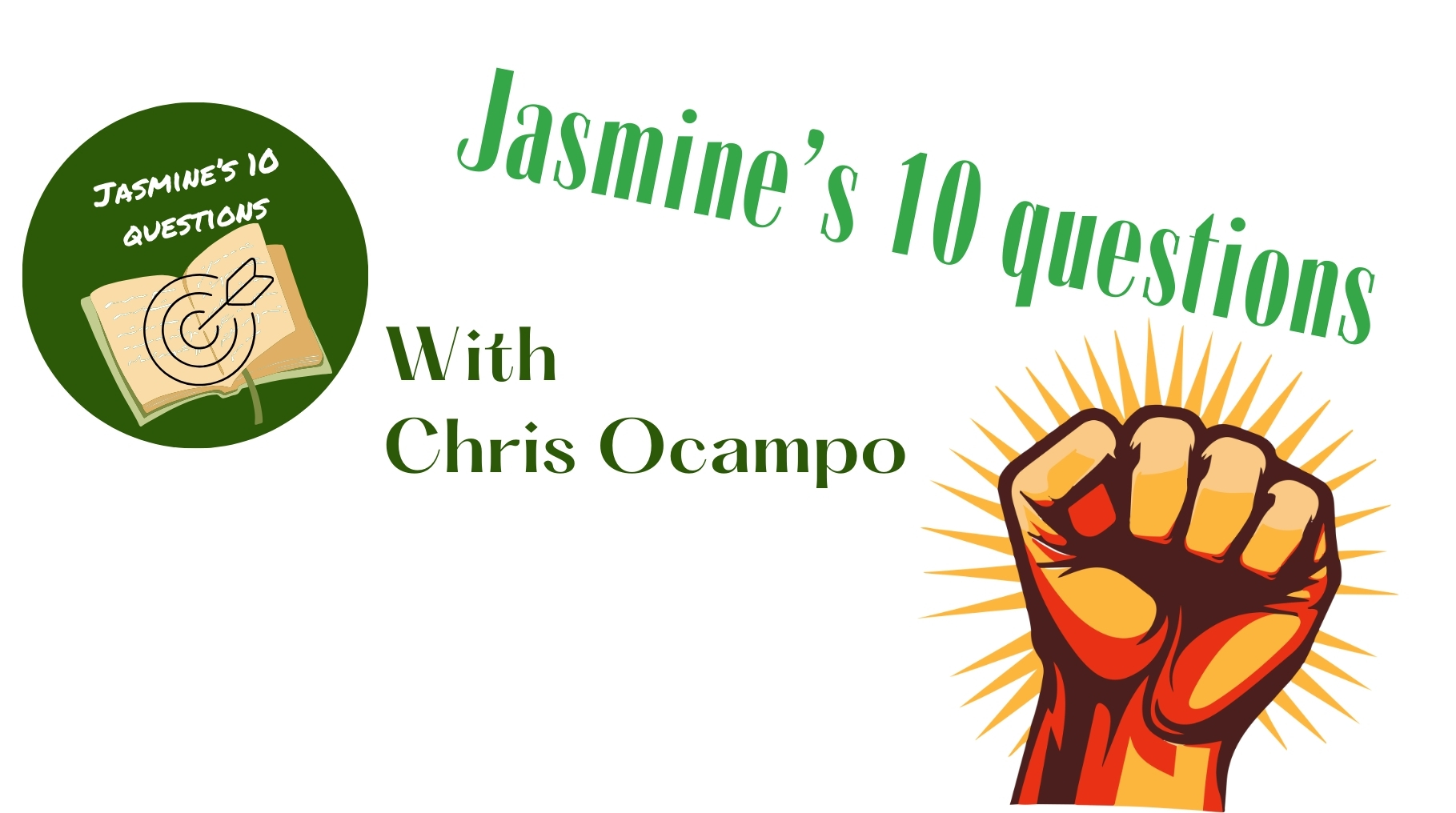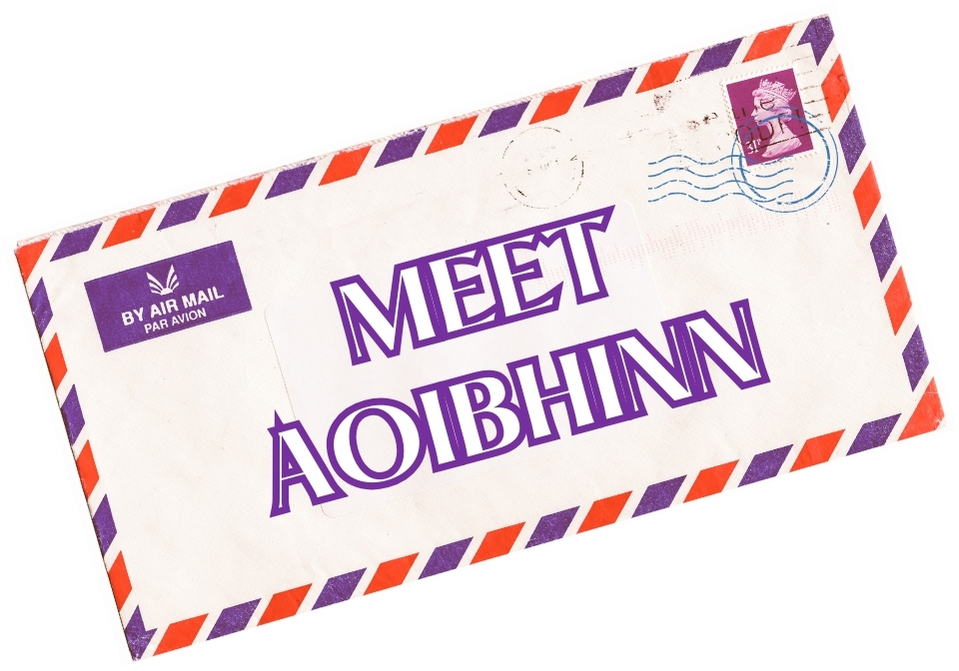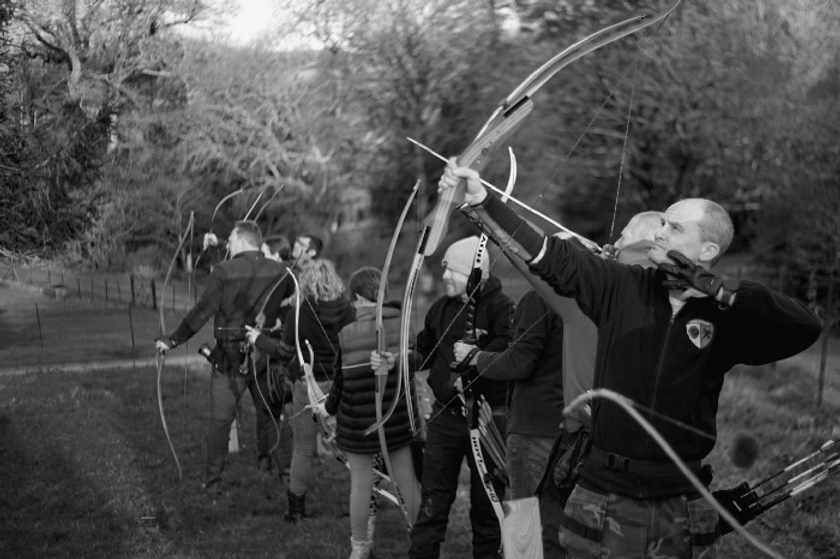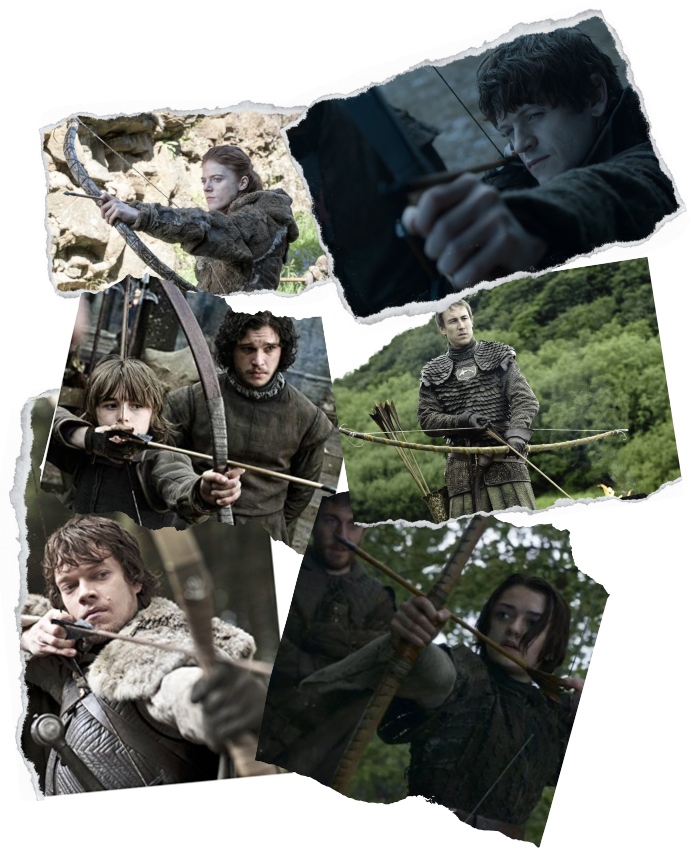
By Marcin Malek
Greetings, intrepid readers, and welcome back to “Winning Paths,” the series where the bullseye is not just a goal but a journey, traversing through the realms of history, literature, and the sheer artistry of archery. Today, we venture into the rugged landscapes of Westeros and the vast expanses of Essos, guided by none other than George R.R. Martin’s quiver full of tales, “A Song of Ice and Fire.”
In this episode we draw the bowstring tight, aiming to pierce the heart of the cultural and narrative fabric interwoven with archery in this epic saga. Our journey will not just skim the surface of martial skill, but delve deep into the layers of significance that archery commands across the diverse cultures, histories, and personal odysseys within the series.So, notch your arrow, draw the bow, and let us loose into the heart of “The Ways of Archery in George R.R. Martin’s ‘A Song of Ice and Fire.’” A tale where the whisper of the bowstring is as compelling as the clash of kings, and the flight of an arrow can change the course of history. Stay with us, as this episode promises to be an exciting exploration of the art and soul of archery, where every shot is a story, and every mark left is a legend in the making.
In George R.R. Martin’s magnum opus the bow and arrow serve not just as tools of war but as profound symbols interwoven with the cultural and narrative fabric of the Seven Kingdoms and beyond. Martin’s detailed world-building and character development offer a rich montage in which archery is imbued with varying layers of significance, reflecting the diverse cultures, histories, and personal journeys within the epic saga. This exploration delves deep into the cultural significance of archery across the vast landscapes of Westeros and Essos, highlighting its role in shaping characters, societies, and the course of the narrative itself.
In the North, where the Stark family rules, archery is not merely a martial skill but a necessity of survival. The harsh winters and vast wilderness demand proficiency with the bow for hunting and protection. Theon Greyjoy’s prowess with the bow is notable, showcasing his assimilation into the Stark family and the Northern culture, despite his Ironborn heritage. Theon’s journey with archery—from a celebrated marksman to using his skills in betrayal and ultimately, his quest for redemption—mirrors his complex identity struggle and the overarching themes of honor and loyalty pervasive in Northern society.
Beyond the Wall, the wildlings or the Free Folk possess a distinct relationship with archery, emblematic of their resilience and independence. Characters like Ygritte demonstrate exceptional skill with the bow, essential for defending their people from the dangers of the haunted forest and the ever-looming threat of the Others. For the wildlings, archery is intertwined with their very survival, representing their fierce autonomy and adaptability in the face of harsh environmental and political adversaries.
In the Vale, the archery traditions reflect the region’s chivalric and noble culture, with young squires and knights training in the art as part of their martial education. The Arryns, ruling house of the Vale, host tournaments where archery contests are a highlight, celebrating skill, precision, and honor—values deeply cherished in the chivalric code.
Contrastingly, in the exotic lands of Essos, the Dothraki view archery through the lens of mounted warfare, demonstrating the cultural adaptability of this art. Their horseback archery, swift and deadly, symbolizes the Dothraki’s nomadic lifestyle, prowess in battle, and dominance over the vast grasslands. This aspect of archery highlights the intersection of cultural practices and environmental necessities, showcasing Martin’s attention to the diverse expressions of archery across different societies.
Archery also serves as a critical tool for character development, offering insights into personalities, ambitions, and growth. Bran Stark’s early dreams of becoming an archer are shattered following his fall, leading him on a path toward mystical powers and a deeper understanding of his role in the greater scheme of things. His initial yearning for archery reflects a universal desire for mastery and autonomy, themes that resonate with many characters in the saga.
For characters like Anguy, the sharpshooter from the Brotherhood Without Banners, archery is a defining trait that offers him status, purpose, and a means to contribute to the group’s guerrilla warfare tactics. His exceptional skill with the bow underscores themes of skill overcoming birthright, a recurring motif in Martin’s narrative that challenges traditional notions of power and authority.
Archery plays a pivotal role in the political and social dynamics of Westeros. The Brotherhood Without Banners, for instance, uses archery not just for combat but as a symbol of their resistance against the corruption and tyranny of the realm’s nobility. Their skilled archers, like Anguy, become figures of folk heroism, embodying the struggle for justice and protection of the common folk.
In the larger battles and sieges that shape the political landscape of Westeros, archery often turns the tide of conflict. The Battle of the Blackwater and the defense of Castle Black are prime examples where strategic use of archery demonstrates its critical role in warfare, influencing the outcomes of pivotal confrontations and, by extension, the power dynamics within the Seven Kingdoms.
Beyond its practical implications, archery in “A Song of Ice and Fire” carries significant symbolic weight. It often represents the characters’ internal battles, struggles for identity, and quests for personal honor. The bow and arrow, in their simplicity and lethality, embody the dualities of life and death, power and responsibility, highlighting the moral complexities faced by the characters in their respective journeys.
Furthermore, Martin uses archery as a narrative device to propel the plot, develop characters, and enrich the thematic depth of the saga. The act of loosing an arrow can signify the unleashing of fate, a moment of irreversible action that echoes the series’ exploration of choice, consequence, and the burden of power.
As For the the strategic and tactical employment of archery in Martin’s novels it is a recurring and critical element that significantly influences the outcome of battles, sieges, and personal combats throughout the epic narrative. His detailed depiction of archery, ranging from the use of longbows and crossbows to the more exotic dragonbone bows of the Dothraki, not only adds to the realism and complexity of his medieval-inspired world but also serves as a crucial factor in its political and military dynamics. In this section I will seek to expose the complex role of archery in warfare throughout an entire series, focusing on its impact on the tactics of different factions, how it shapes the battle portrayal, and its relevance to the broader themes of power, survival and the cost of victory.
One of the most vivid demonstrations of archery’s tactical importance in Martin’s saga is the Battle of the Blackwater, where Tyrion Lannister’s forces defend King’s Landing against Stannis Baratheon’s assault. Archers play a pivotal role in this battle, employing fire arrows to ignite the wildfire set upon the Blackwater Rush, creating a devastating inferno that decimates a significant portion of Stannis’s fleet. This ingenious use of archery exemplifies how it can be combined with other elements of warfare to create a force multiplier, showcasing the ingenuity required to turn the tide of battle under desperate circumstances.
Similarly, the defense of Castle Black against the wildling army led by Mance Rayder highlights the strategic importance of archery in defending fortifications. The Night’s Watch, vastly outnumbered, relies heavily on their archers to thin the ranks of the attacking force, demonstrating the efficacy of archery in siege defense, especially when the defenders hold the high ground. The volleys of arrows raining down on the wildling attackers serve as a grim reminder of the power of well-positioned archers to halt an advancing enemy, underscoring the importance of terrain and fortification in medieval warfare.
In open field battles, the use of archery is equally strategic, with armies often deploying archers to weaken enemy formations before the melee begins. The Battle of the Bastards, though more prominently featured in the television adaptation, “Game of Thrones,” offers a stark illustration of how archery can shape the dynamics of an open field engagement. Ramsay Bolton’s use of volleys to provoke Jon Snow’s forces into breaking formation prematurely demonstrates the psychological as well as the physical impact of archery on the battlefield. This tactic of using archers not just to inflict casualties but to manipulate the enemy’s movements and decisions highlights the layered strategic considerations commanders must account for in employing their archers.
Beyond large-scale battles, archery plays a significant role in smaller skirmishes and acts of guerrilla warfare throughout “A Song of Ice and Fire.” The Brotherhood Without Banners, for example, utilizes archers like Anguy – said at the beginning – to great effect in their hit-and-run tactics against the forces of the Lannisters and their allies. Anguy’s remarkable skill with the longbow allows the Brotherhood to conduct ambushes and targeted strikes with precision, underscoring the value of individual prowess in archery within the broader context of irregular warfare. This guerrilla strategy, reliant on mobility, knowledge of the terrain, and the ability to strike from a distance, exemplifies the adaptability of archery to various forms of military engagement.
The series also explores the use of crossbows and siege weapons, expanding the scope of archery in warfare. Crossbows, with their greater penetration power and ease of use, play a crucial role in personal protection and assassination, as seen in the infamous Red Wedding and Tyrion Lannister’s killing of his father, Tywin. On a larger scale, siege engines like scorpions and ballistae, designed to launch projectiles over great distances, are employed to breach fortifications and counter dragons, highlighting the evolution of archery technology in response to changing military challenges.
Archery’s psychological impact on both soldiers and civilians is a recurring theme in Martin’s work. The fear and demoralization inflicted by an unseen enemy capable of striking from a distance can erode morale and disrupt the cohesion of forces, an aspect that Martin captures effectively through the experiences of characters on the receiving end of such attacks. The anticipation of an arrow’s sudden, silent death adds a layer of psychological warfare to the physical battle, a dimension that Martin explores to emphasize the brutality and unpredictability of war. Archery serves not just as a means of warfare or survival but as a profound marker of character, delineating personal virtues, flaws, and growth across the series. Through the lens of archery, Martin crafts intricate character arcs, uses the bow and arrow as symbols of heritage and identity, and explores deeper themes of honor, redemption, and the human condition.
- Theon Greyjoy: Identity and Redemption
The journey of Theon Greyjoy offers one of the most poignant explorations of archery as a marker of character. Initially introduced as a skilled archer, Theon’s proficiency with the bow symbolizes his desire to prove his worth and identity, caught between his Ironborn heritage and his upbringing with the Starks. Archery represents Theon’s attempt to navigate these conflicting identities, seeking approval and belonging. However, as Theon betrays the Starks and seizes Winterfell, his use of archery in executing Ser Rodrik Cassel becomes a stark symbol of his moral descent and the loss of his honor.
Theon’s subsequent capture, torture, and transformation into “Reek” strip him of his identity, including his skill in archery. His long path to redemption is, in part, marked by a gradual reclamation of his identity and skills. In this sense, archery serves as a narrative device reflecting Theon’s internal struggle, his quest for redemption, and his efforts to reconcile the different parts of his identity. Through Theon, Martin illustrates the complexity of human nature, the potential for change, and the long road to self-forgiveness.
- Bran Stark: Loss and Transformation
For Bran Stark, archery represents the dreams and aspirations shattered by his fall from the tower in Winterfell. Before his paralysis, Bran is enthusiastic about improving his archery skills, a symbol of his desire for adventure and heroism typical of a young noble. However, his fall and subsequent disability transform his relationship with archery into a poignant reminder of what he has lost.
Yet, as Bran embarks on his mystical journey to become the Three-Eyed Raven, archery takes on new meaning in his character arc. It symbolizes the past he must let go to embrace his new identity and powers. Through Bran, Martin explores themes of loss, transformation, and the acceptance of one’s fate. Archery, in Bran’s narrative, underscores the sacrifices inherent in his quest for knowledge and power, highlighting the bittersweet nature of growth and change.
- Anguy: Skill and Simplicity
Anguy, the sharpshooter from the Brotherhood Without Banners, presents another facet of archery as a character marker. Winning the archery contest at the Hand’s tourney with remarkable skill, Anguy embodies the ideal of mastery and dedication. Unlike Theon and Bran, for whom archery is intertwined with deeper quests for identity and transformation, Anguy’s characterization through archery celebrates the purity of skill and the pride of craftsmanship.
Through Anguy, Martin champions the common man and the notion that honor and respect are earned through merit rather than birthright. Archery, in this case, serves as a great equalizer, showcasing how talent can elevate an individual regardless of their social standing. Anguy’s role in the Brotherhood, using his skills in service of justice, further reinforces the theme of skill over status, a recurring motif in Martin’s narrative that challenges traditional power dynamics.
- Ygritte: Culture and Connection
Ygritte, the wildling woman and Jon Snow’s love interest, uses her archery skills as a means of survival and as an expression of her cultural identity. For Ygritte and the Free Folk, archery is not just a martial skill but a vital aspect of their daily lives, used in hunting and defending their territories. Ygritte’s prowess with the bow signifies her strength, independence, and deep connection to her people’s way of life.
Her relationship with Jon Snow, facilitated in part by their mutual respect as warriors, allows Martin to explore themes of love, loyalty, and the challenges of bridging cultural divides. Ygritte’s archery symbolizes the wildlings’ resilience and pride, offering a contrast to the more formalized martial practices south of the Wall. Through Ygritte, archery becomes a marker of character that encompasses personal skill, cultural heritage, and the capacity for deep emotional connection.
- Jon Snow: Leadership and Moral Complexity
Jon Snow’s experiences with archery, particularly during the defense of Castle Black and his time with the wildlings, serve as crucial moments in his development as a leader and a warrior. Jon’s use of a bow is pragmatic, reflecting his adaptability and willingness to learn from those around him, including the Free Folk. However, it also raises questions of morality and duty, as he faces the dilemma of loyalties between his brothers in the Night’s Watch and the wildlings he grows to respect and understand. Archery, in Jon’s narrative, symbolizes the tensions between tradition and change, duty and love, highlighting his journey towards understanding the complexities of leadership and the sacrifices it entails.
- Robb Stark: The Young Wolf and the Burdens of Command
Though not depicted as extensively using archery as other characters, Robb Stark’s command in battles, where archers played significant roles, underscores his strategic acumen and the heavy burdens of kingship. Robb’s leadership during the War of the Five Kings involves making critical decisions about the deployment of his forces, including archers, in various sieges and skirmishes. These decisions, often made with the counsel of his advisors, reflect the complexities of medieval warfare and the challenges of maintaining honor and integrity in the face of political and military adversity. Archery, in the context of Robb’s campaign, represents the broader strategies of war and the weight of command on young shoulders.
- Arya Stark: Survival and Vengeance
Arya Stark’s journey from a young girl practicing archery in the courtyards of Winterfell to a skilled assassin of the Faceless Men encompasses themes of survival, identity, and vengeance. While Arya’s use of the bow is not her primary means of combat, her initial interest in archery signifies her rejection of traditional feminine roles and her desire for independence and strength. This early inclination towards archery evolves into a broader skillset that allows Arya to navigate the dangers of her world, symbolizing her resilience and her relentless pursuit of justice and revenge against those who have wronged her and her family.
- Sansa Stark: The Unseen Archer
Sansa Stark, unlike her siblings, does not wield a bow, yet her journey can be metaphorically linked to the theme of archery, representing the unseen archer. Sansa’s development from a naive young girl into a politically savvy player in the game of thrones involves learning to navigate and manipulate the complex web of alliances and enmities at court. Her growing acumen can be seen as the metaphorical arrows in her quiver, using wit, empathy, and strategic marriage alliances as her weapons. Sansa’s story emphasizes that strength and influence can come from unexpected places and that the power of an archer can lie not only in the bow but in the precision of their aim, even when it comes to the intricate dance of politics and power.
- Tyrion Lannister: The Strategist and the Outsider
Tyrion Lannister’s relationship with archery is tangential but significant, particularly in his strategic use of archers in the defense of King’s Landing during the Battle of the Blackwater. Tyrion’s cunning plan involving wildfire and the strategic placement of archers on the city’s walls showcases his intellect and understanding of warfare. Moreover, his later interactions with crossbow-wielding characters, including his murder of his father, Tywin, with a crossbow, highlight themes of patricide, vengeance, and the reversal of power dynamics. Archery, in Tyrion’s arc, becomes a tool of justice and revenge, reflecting his complex relationship with power, family, and his search for a place in a world that often rejects him.
- Ramsay Bolton: an archer, sadist and villain
Reflecting on Ramsay Bolton, both from George R.R. Martin’s “A Song of Ice and Fire” books and HBO’s adaptation, “Game of Thrones,” I find myself intrigued by the nuances that distinguish his portrayal in each medium, especially regarding his use of archery. In the HBO series, Ramsay’s cruelty is displayed vividly in a scene where he kills Rickon Stark with his bow, a moment that starkly captures his sadistic nature. This scene, emblematic of Ramsay’s character in the show, is both chilling and revealing; it showcases his psychological torture techniques and his proficiency with a bow, using Rickon’s death to torment Jon Snow and unsettle his forces before the Battle of the Bastards.
In contrast, the books paint a broader, yet less specific, picture of Ramsay’s brutality. While his sadism is undeniable, with his penchant for hunting humans and flaying his enemies, the specific act of using archery to torment Rickon Stark is absent, mainly because the narrative in the books had not reached this point at my last reading. Ramsay’s enjoyment of inflicting pain is more psychological and systemic, rather than focused on singular acts of violence. His manipulation and torment of Theon Greyjoy, whom he reduces to “Reek,” serve as prime examples of his cruelty, highlighting his penchant for psychological over physical torture.
Thus, when comparing Ramsay’s use of archery in the book and the series, I’m struck by the adaptations made for the screen. The series, with its visual medium, leans into more direct representations of Ramsay’s sadism, using the archery scene as a powerful tool to evoke fear and display his villainy. The books, however, offer a more insidious view of his character, focusing on the mental and emotional breakdown of his victims, with less emphasis on specific methods of torture.
This divergence between book and series highlights the challenges and opportunities of adapting such complex material. The series, by focusing on visual representation, brings to life Ramsay’s cruelty in a direct, visceral manner, making him a character viewers love to hate. Meanwhile, the books, constrained only by the reader’s imagination, delve deeper into the psychological impact of his actions, providing a nuanced exploration of terror that is as compelling as it is horrifying. This comparison between the character of Ramsay Bolton in the book and the HBO series, especially through the lens of the archery scene with Rickon Stark, underscores the richness of Martin’s world and the interpretive layers added by its adaptation.
In “A Song of Ice and Fire,” archery transcends its traditional role as a mere element of medieval combat, evolving into a powerful narrative device that propels the story, reveals character depth, and enriches thematic exploration. Martin adeptly uses archery to initiate pivotal plot developments, symbolize character arcs, and underscore the series’ exploration of power, conflict, and survival. This is, as you can see, my own and at times possibly stretched interpretation (exploration) of the theme of archery in R.R. Martin’s work, it was not my intention to dissect the book, nor to make any judgement or find fault or flaws, rather it is my humble attempt to convey insight as to how archery functions as a multi-faceted narrative device in this vast epic, affecting the fates of characters and the Seven Kingdoms at large.
One of the most notable instances where archery serves as a narrative catalyst is in the attempted assassination of Bran Stark. An assassin’s use of a distinctive Valyrian steel dagger in conjunction with a bow sets off a chain of events that deepens the Stark-Lannister enmity, propelling the narrative into the War of the Five Kings. This act, though seemingly a minor part of the larger conflict, illustrates how archery can trigger significant plot developments, setting the stage for the unfolding saga of treachery, power struggles, and war.
The cultural significance of archery among the Free Folk and other societies in the series serves as a narrative device to explore themes of identity, tradition, and the clash of civilizations. Ygritte, with her renowned archery skills, embodies the wildling spirit of independence and defiance, contrasting the structured martial traditions of the Seven Kingdoms. Through characters like Ygritte, Martin uses archery to highlight the diversity of cultures and peoples in his world, their differing values and practices, and the conflicts and connections that arise from these differences.
Archery also prompts characters and readers alike to confront ethical and moral questions. The silent, distant nature of death by archery raises questions about honor, valor, and the nature of warfare. Is killing from a distance less honorable than face-to-face combat? This question is implicitly posed through scenes of archery in battle, challenging traditional notions of chivalry and heroism in the context of the series’ brutal portrayal of war.
Finally, archery serves as a poignant reminder of the human cost of conflict. Scenes depicting the aftermath of battles, with fields littered with arrows and the dead, offer a stark commentary on the tragedy of war. Martin does not shy away from detailing the grief, loss, and suffering caused by warfare, using archery as a symbol of the indiscriminate and impersonal nature of death in battle. This thematic exploration resonates deeply with the series’ overarching narrative, emphasizing the toll of the quest for power on individuals and societies.
The use of archery in “A Song of Ice and Fire” frequently intersects with the concept of honor, a pervasive theme throughout the series. Honor in Westeros is often tied to martial prowess and the chivalric code, which traditionally valorizes close combat as the most noble form of warfare. However, Martin complicates this notion through his depiction of archery, which, while sometimes viewed as less honorable due to its distance from the enemy, emerges as a means of leveling the playing field between the powerful and the powerless. For characters such as Theon Greyjoy and Anguy the Archer, archery is a source of pride and a demonstration of skill that earns them respect and recognition, challenging traditional notions of honor and valor in combat.
Archery in Martin’s saga also serves as a metaphor for justice, both in its execution and its evasion. Characters like Arya Stark and Bran Stark, though for different reasons and in different contexts, are associated with themes of justice and retribution, with archery acting as a symbolic extension of their quest for fairness in an unjust world. Arya’s training with the bow, along with her broader education in the deadly arts, becomes part of her journey towards avenging the wrongs done to her family. For Bran, his early interest in archery and subsequent transformation into the Three-Eyed Raven encompasses a shift from seeking personal revenge to assuming a role that oversees a broader, more abstract form of justice across time and space. In these cases, archery poetically encapsulates the characters’ struggles with the ethics of vengeance and the pursuit of justice in a morally ambiguous world.
Martin uses archery to probe the ethical dimensions of violence and warfare. Scenes depicting the aftermath of battles, where the land is littered with the dead, marked by arrows, serve as somber reflections on the cost of war. Through such imagery, the series questions the glorification of violence, highlighting the suffering and devastation it brings to both combatants and innocents. Archery, with its capacity for killing from a distance, embodies the impersonal nature of war, prompting characters and readers alike to contemplate the moral weight of taking life without facing the opponent, a theme that resonates with contemporary concerns about warfare and technology.
For several characters, mastery of archery is integral to their identity and their journey towards self-realization. Theon’s arc, from a skilled archer seeking approval to a broken man yearning for redemption, exemplifies how archery can symbolize a character’s internal struggle and evolution. Similarly, Ygritte’s prowess with the bow signifies not only her personal strength but also her cultural identity as a Free Folk, underscoring the role of archery in shaping individual and collective identities. Through these narratives, Martin explores the ethical implications of personal growth and transformation, examining how characters reconcile their actions and ambitions with their moral compass and societal expectations.
Archery serves as a poetic means of empowerment and resistance against oppression and tyranny within the series. The Brotherhood Without Banners, using their skills in archery, fight against the injustice of the ruling class, positioning archery as a tool for the marginalized to challenge their oppressors. This depiction not only underscores the ethical underpinnings of resistance and rebellion but also highlights the egalitarian potential of archery, as it requires skill rather than birthright or brute strength, democratizing the ability to wield power and effect change.
And there we have it… folks! A tale spun from the strings of a thousand bows, each one leaving its mark on the sprawling canvas of “A Song of Ice and Fire.” Who knew that a simple bow and arrow could hold the weight of kingdoms, the fate of heroes, and the heart of such a vast narrative? From the icy tips of the North to the sun-scorched sands of Dorne, we’ve traveled the realms, uncovering the essence of archery that Martin so masterfully portrays.
We’ve seen how a boy’s shattered dreams can lead to a kingdom’s last hope, how the redemption of a lost soul can be found in the fletching of an arrow, and how the defiance of a culture can be embodied in the pull of a bowstring. It’s been a journey of discovery, of understanding the power behind a seemingly simple weapon and the complex characters who wield it.
But alas, every tale must have its end, and as we loosen our final arrow into the sunset of today’s episode, we must part ways, dear listeners. Fear not, for our paths are sure to cross again in the realm of archery, where every shot tells a story, and every target hit is a victory in its own right.
Thank you for joining us on this venture through the ways of archery in George R.R. Martin’s epic saga. Your keen eyes and eager spirits are what make this journey worthwhile. So, keep your quivers stocked, your bowstrings taut, and your aim true until we meet again on the next episode of “Winning Paths.”
And remember, whether you’re defending a castle, hunting in the deep woods, or merely shooting at a target for sport, the path of the arrow is one of precision, patience, and persistence. May your arrows fly straight, and your paths be ever winning. Thank you for listening and supporting us. Farewell, and keep aiming for those winning paths!




